Мали. Часть II. ДогоныMali. Part II. The DogonНа карте мира Map14–18 мая 2012
May На востоке Мали живут догоны, у которых принято невероятно долго здороваться. Иногда два человека встречаются по дороге и продолжают здороваться до тех пор, пока не перестают слышать ответов друг друга. The east of Mali is inhabited by the Dogon, a people with a tradition of incredibly lengthy greetings. Two people can pass each other on their way and continue their greetings until they’re out of earshot and can no longer hear the other’s answers.
Короткое приветствие:
A short greeting: Потом может начать задавать вопросы тот, кто сначала отвечал. Then the person who has been answering the questions can ask a round in turn. 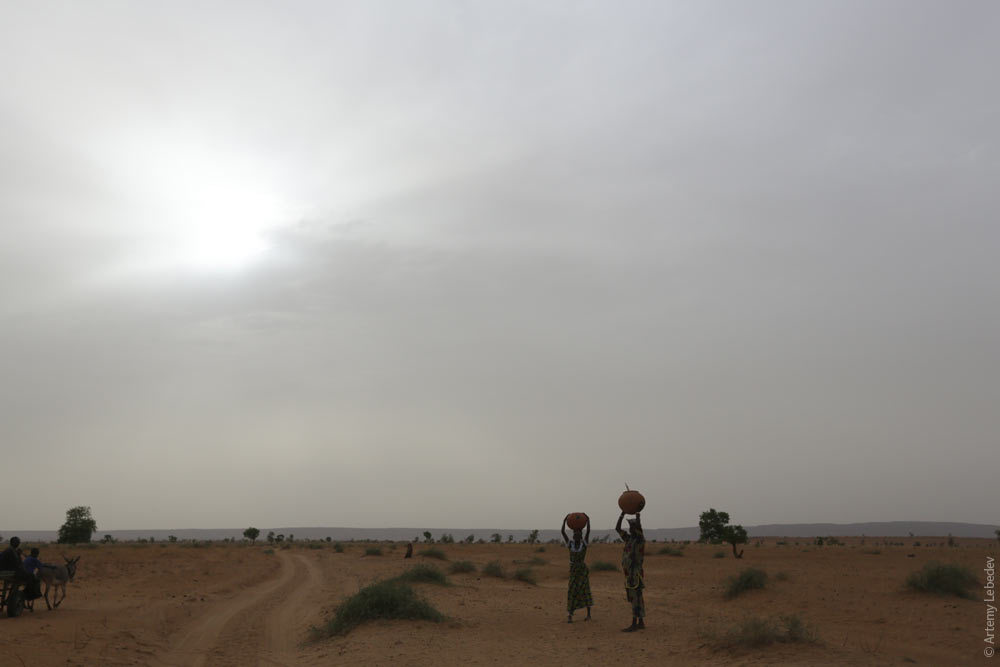 Быт у догонов не менялся много сотен лет. Плоды цивилизации присутствуют в самом скромном виде. The Dogon way of life has remained unchanged for many centuries. The fruits of civilization are scarcely seen here. 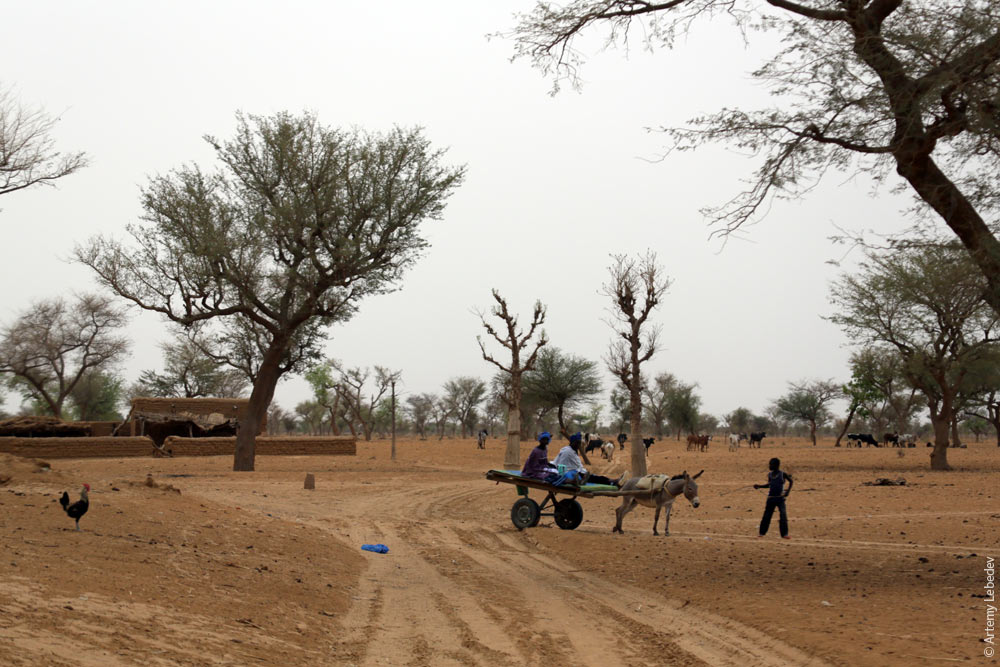 Воду из колодцев достают руками. Water is drawn up from a well by hand. 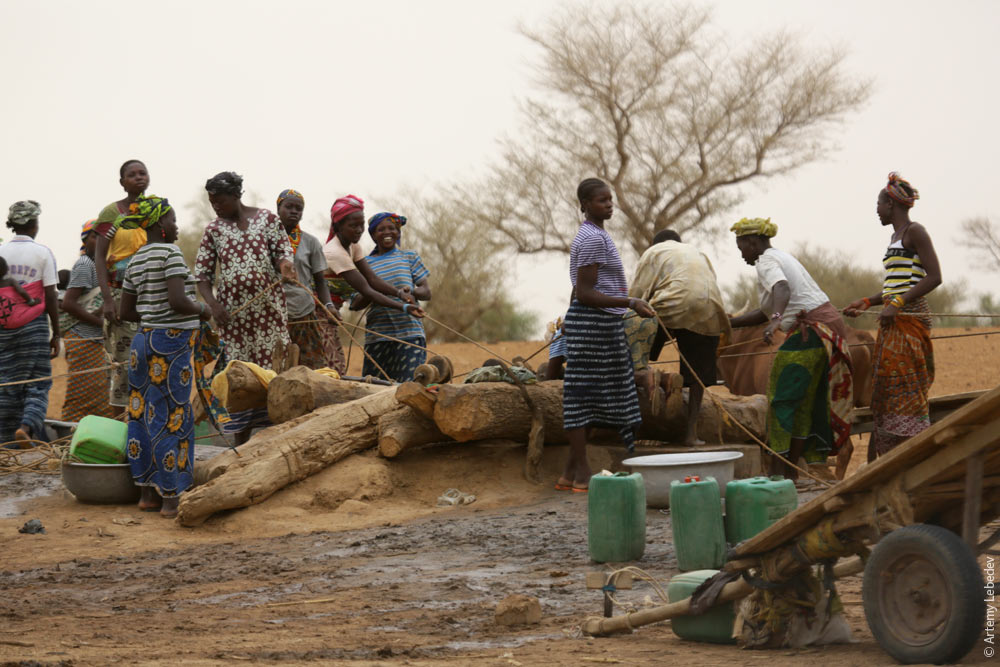 Первые поселения в этих местах были оборудованы еще 1000 лет назад. The first settlements in this area were established 1000 years ago. 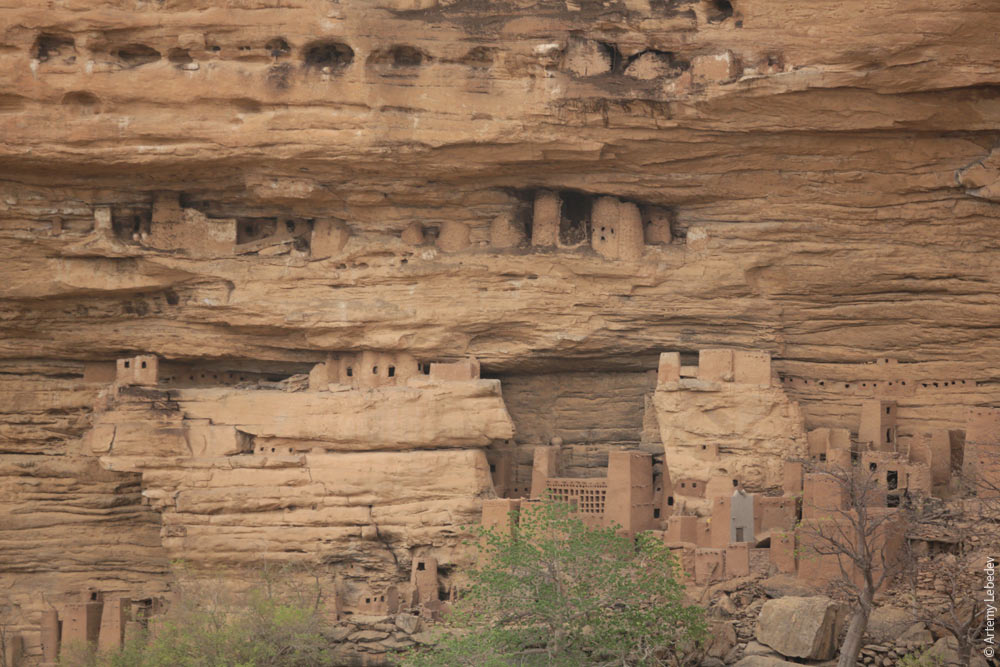 С тех пор мало что изменилось. Very little has changed since then. 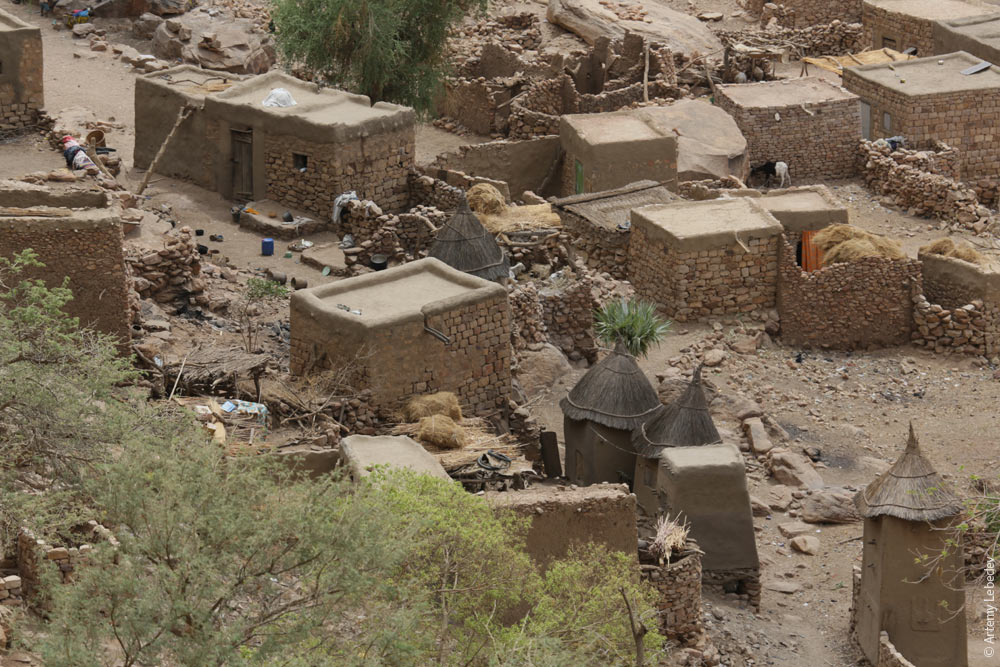 Живут догоны в глиняных домах с соломенными крышами сказочного вида. The Dogon live in clay houses with thatched roofs which look like something out of a fairy tale. 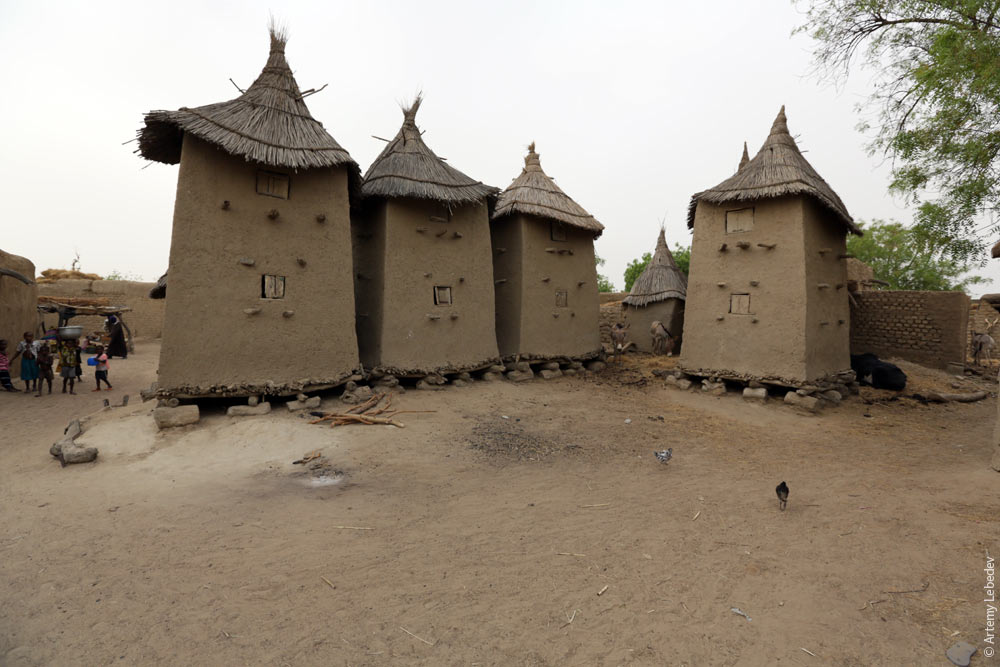 Домики поменьше — для хранения зерна. The smaller houses are for grain storage. 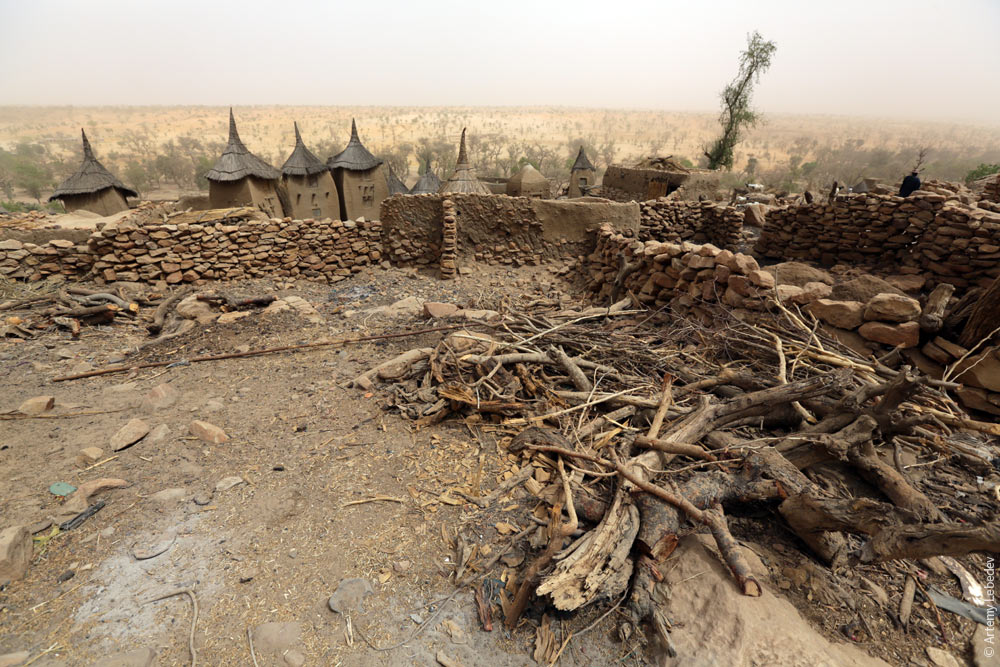 Мечети тоже из глины с характерными торчащими бревнами. Каждый год все мужское население обмазывает новой глиной дома после сезона дождей. The mosques are also made out of clay with distinctive protruding logs. Every year, the male population plasters the houses with a new layer of clay after the rainy season. 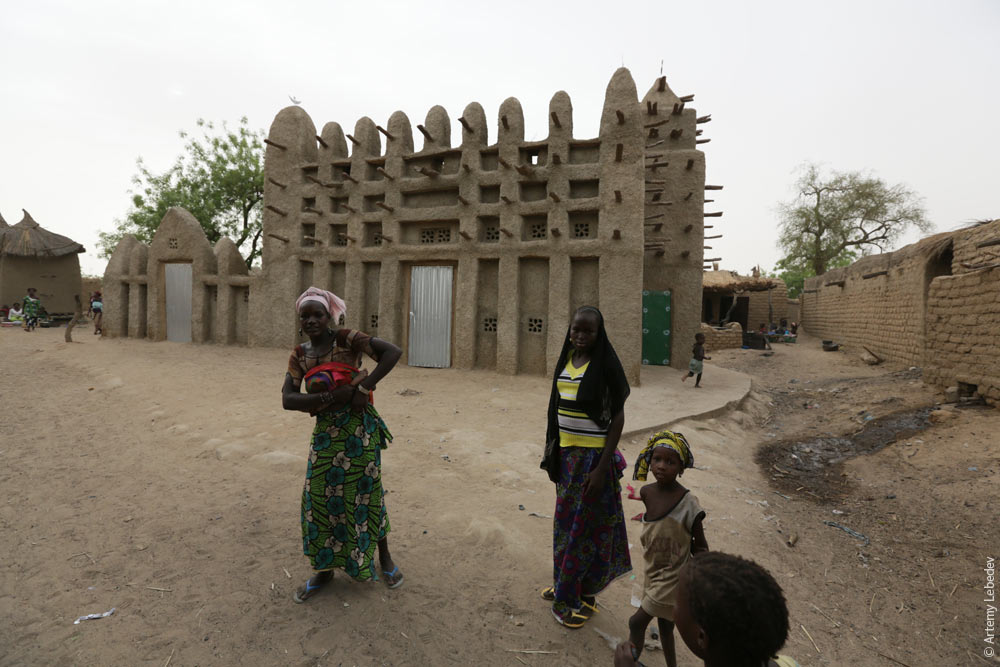 Деревенский запас хвороста и сена хранится на некоторой высоте от земли, чтобы козы не покушались. Пространство снизу используется мужчинами как место для решения споров. Считается, что все споры надо решать мирно, а если кто-то вспылит и вскочит, то ударится головой о низкий потолок и остынет. Когда споров нет, тут просто лежат в тени. The village’s supply of brushwood and hay is stored above the ground to keep it out of goats’ reach. The space underneath is used by the men as an area to resolve disputes. The Dogon believe that all disputes must be resolved peacefully; if someone gets agitated and jumps up, they’ll hit their head on the low ceiling, which will quickly cool their temper. When there’s nothing to dispute, people simply lie in the shade. 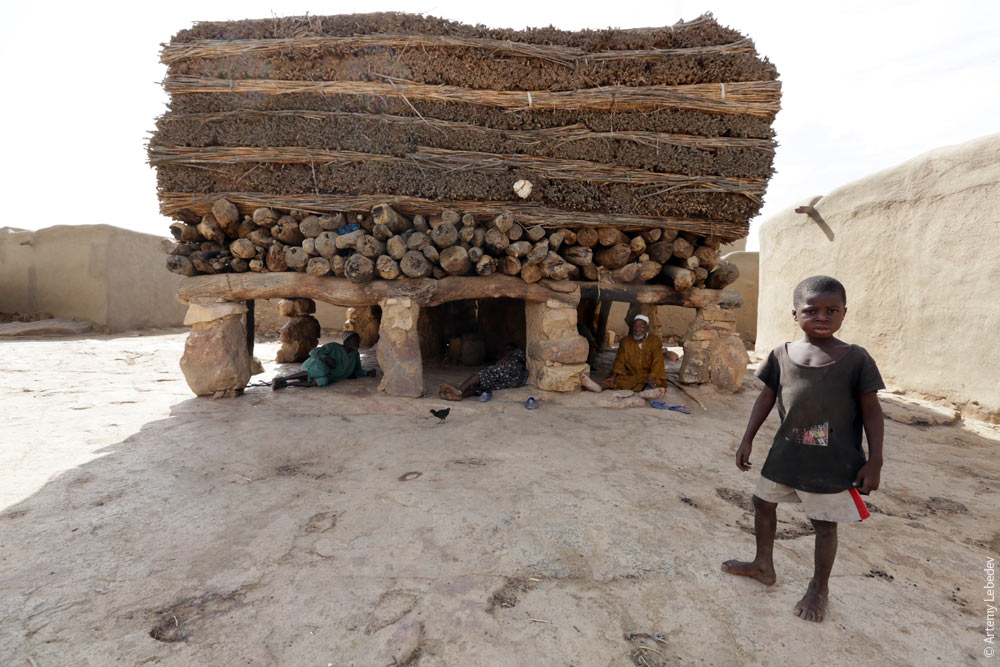 Сельский рынок. A rural market. 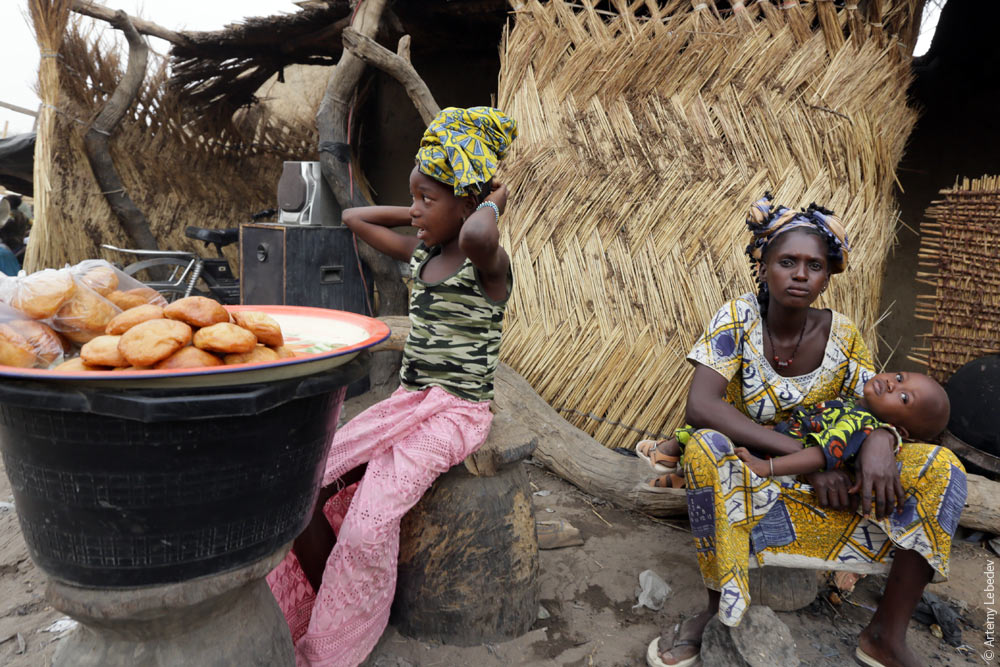 Мужик спит на напольном футболе. A guy sleeping on a foosball table. 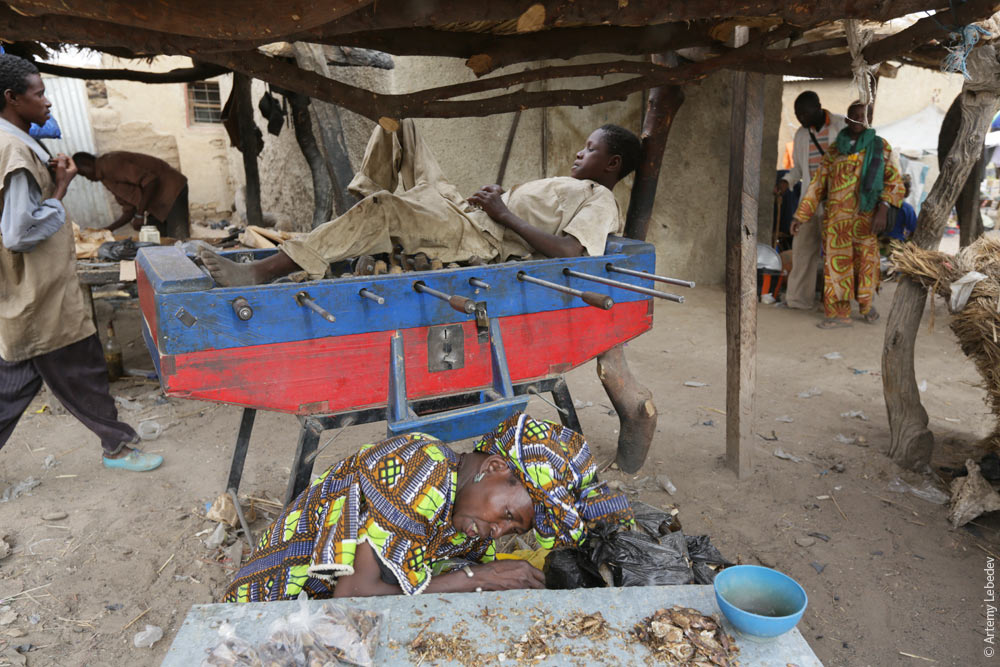 Улица. The street. 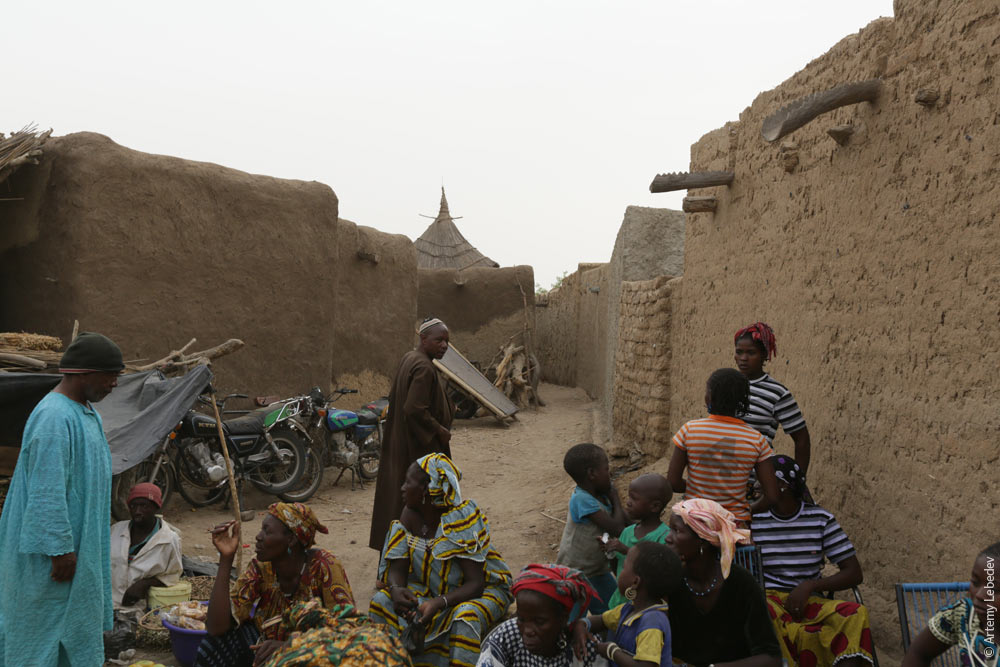 Веселая старуха с ведром воды. A jovial old woman with a bucket of water. 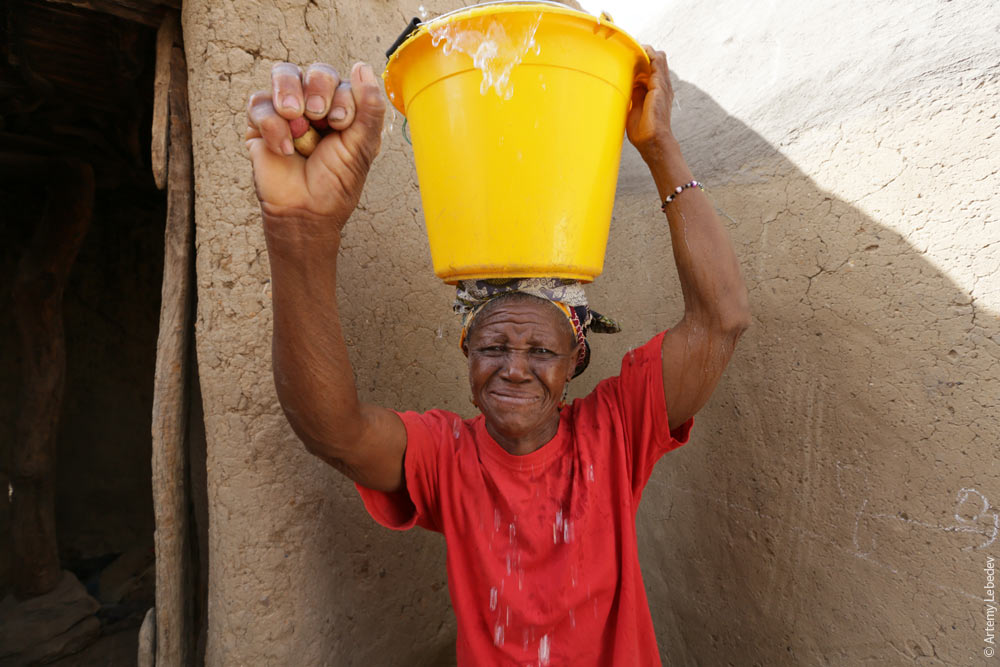 Идут приготовления к поминкам. Preparations for a wake. 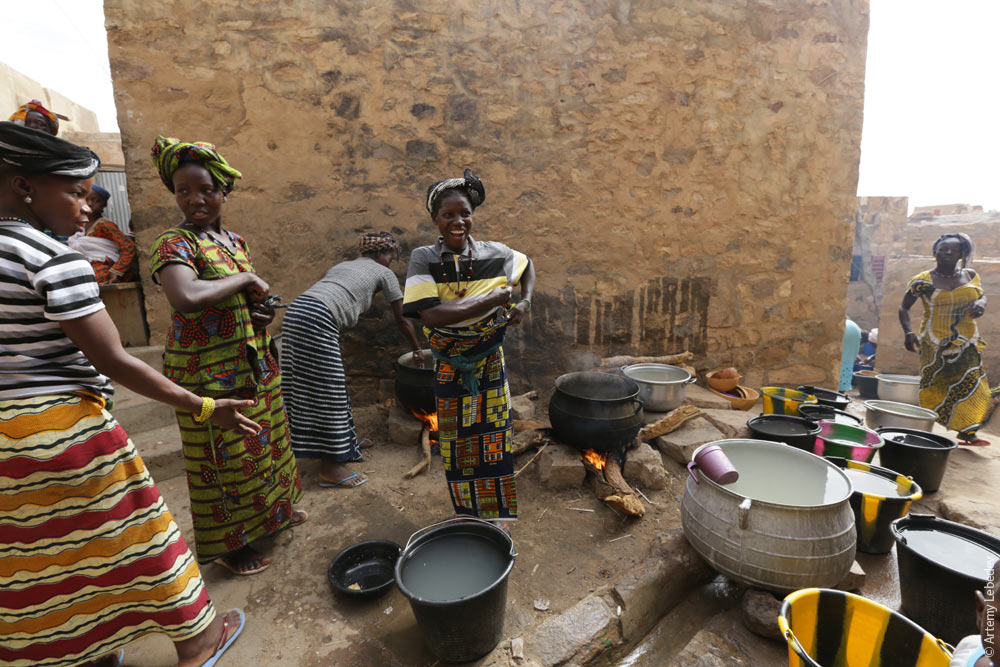 Магазин туристических товаров, где уже месяц никого не было. A souvenir shop which hasn’t seen a single customer in the past month. 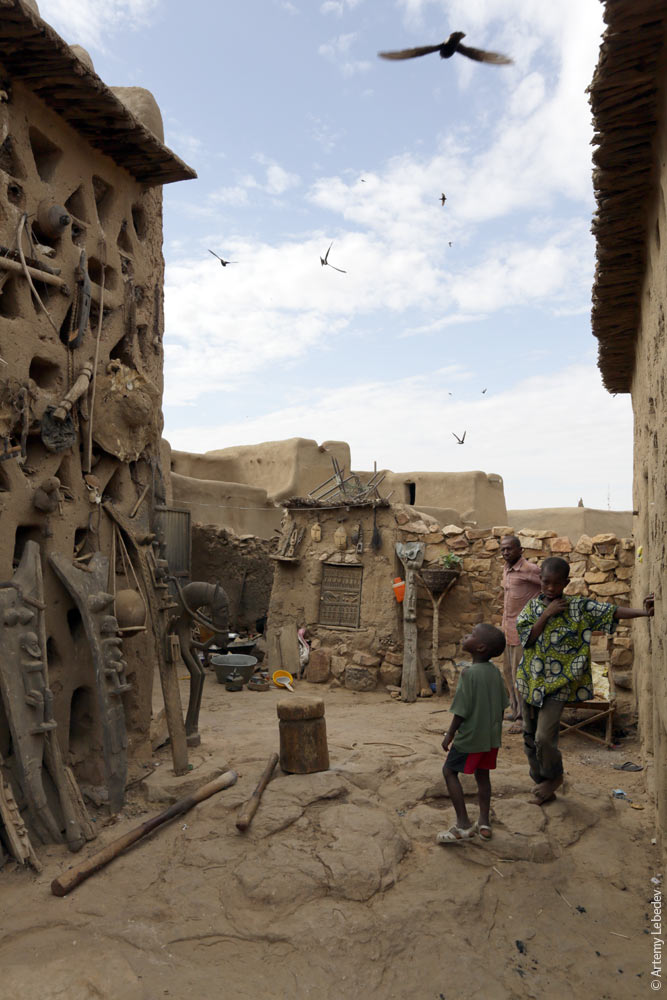 Везде растут баобабы. There are baobabs growing everywhere. 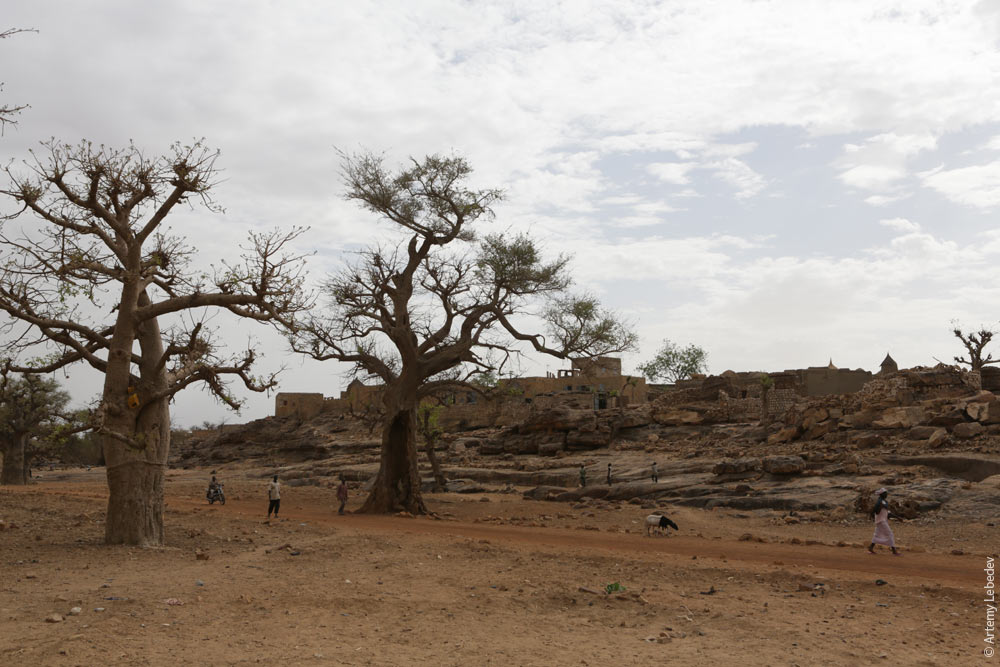 В качестве лестницы используется бревно со ступеньками и развилкой сверху. A forked log with steps carved into it is used as a stepladder. 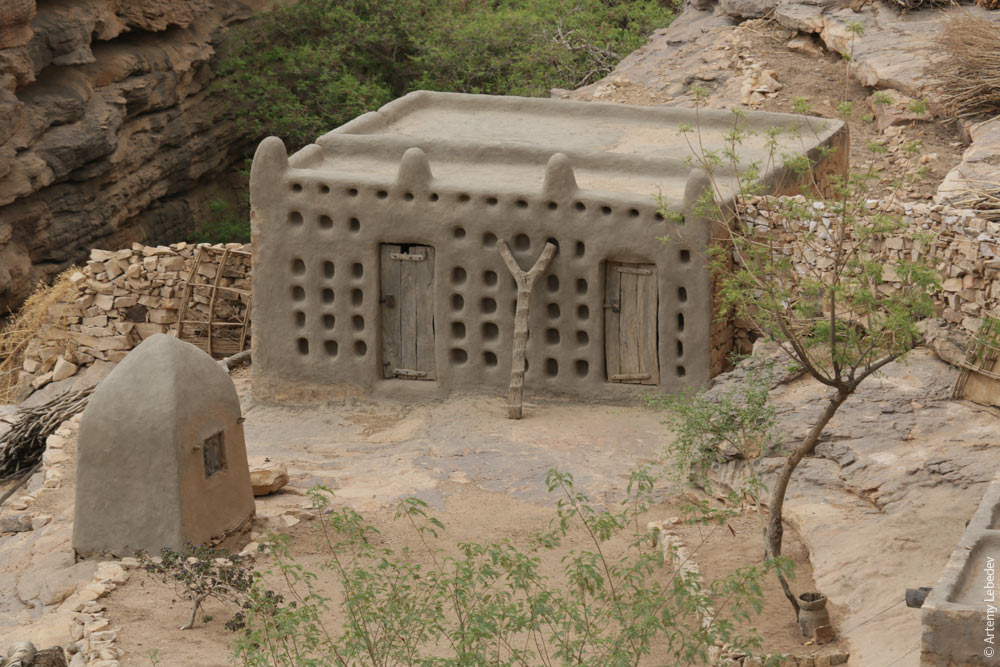 Девушки толкут зерно. Girls pounding grain. 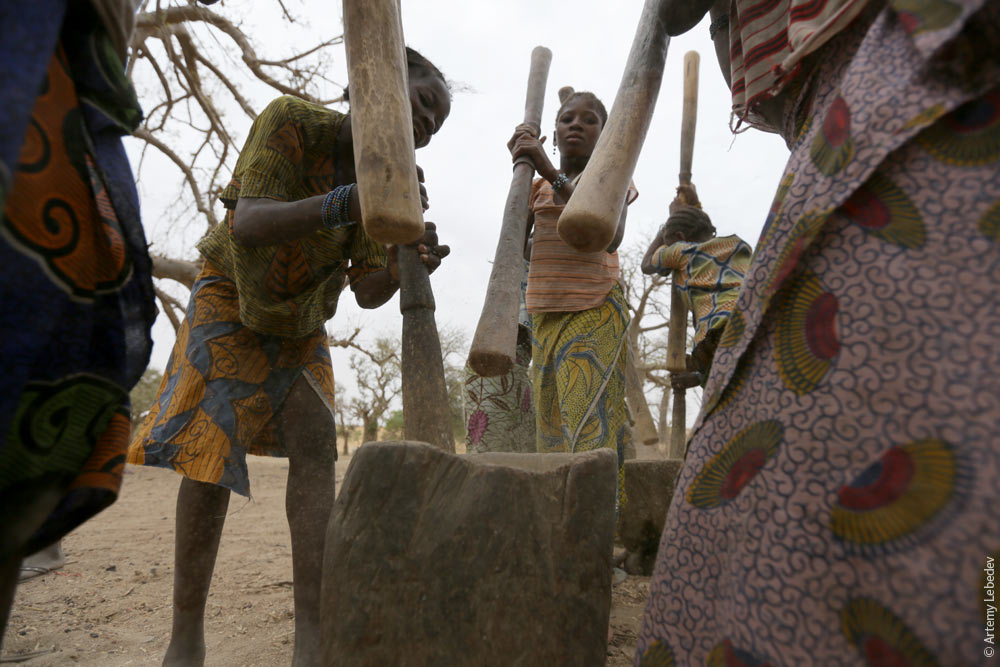 Дети бегут в пещере. Children running in a cave. 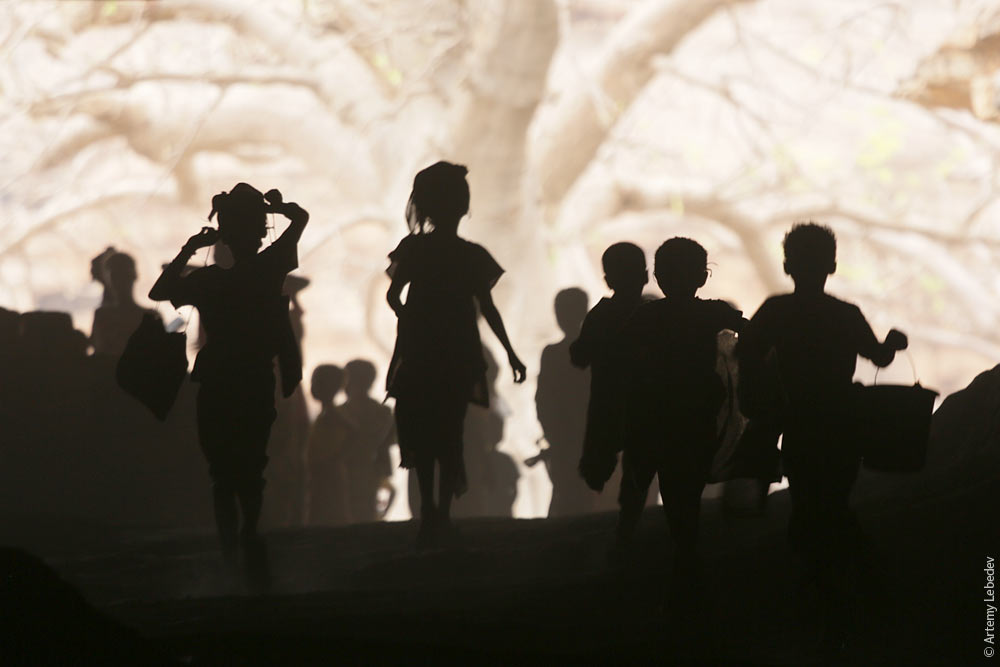 Сельская жизнь. Rural life. 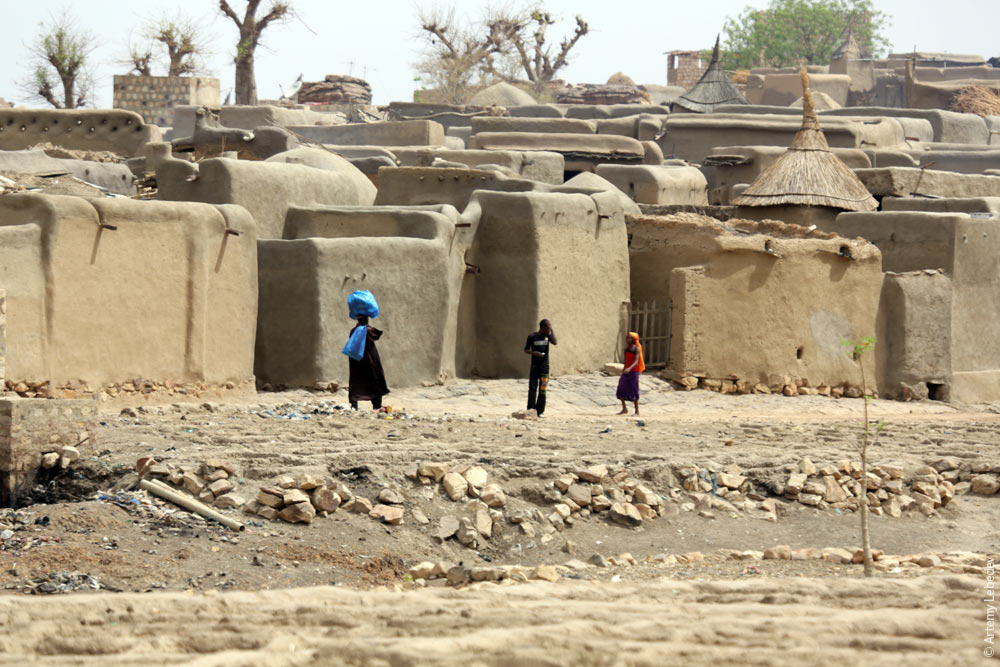 Все жизненные вопросы решаются с помощью лисьего поля. Если у бабы Дуси проблема, она приходит к местному специалисту, который все подробно расспрашивает, расставляя палочки в песке, которые означают людей, предметы и пр. Затем все это оставляют на ночь. Ночью приходит лиса, топчет поле. На следующий день специалист интерпретирует следы и говорит, что делать. All of life’s questions are answered with the help of a fox divination field. If Grandma Gladys has a problem, she goes to her local specialist, who asks her a series of detailed questions and sets up twigs on a rectangular field of sand to represent people, objects and so on. Then all of this is left out overnight. At night, the fox comes and makes a path through the sand. The following morning, the specialist interprets the tracks and explains what to do. 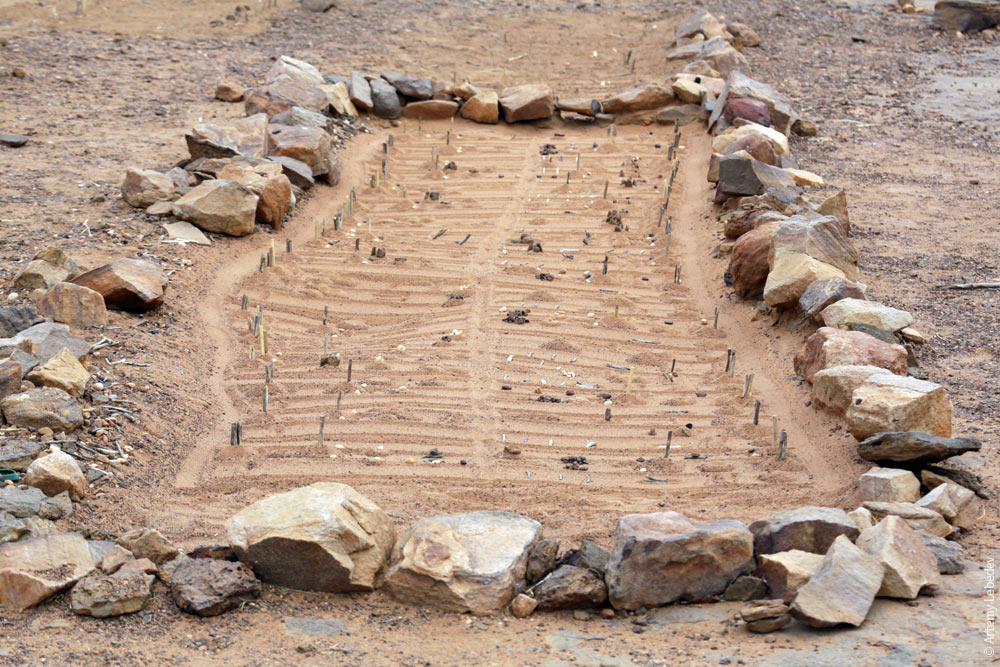 По деревне прошел слух, что белый человек заплатил сто долларов за традиционный танец, в котором принимают участие пятьдесят человек в масках. Люди потянулись на площадь. There’s a rumor in the village that the white man has paid a hundred dollars to see the traditional dance which requires fifty people in masks. People head towards the main square. 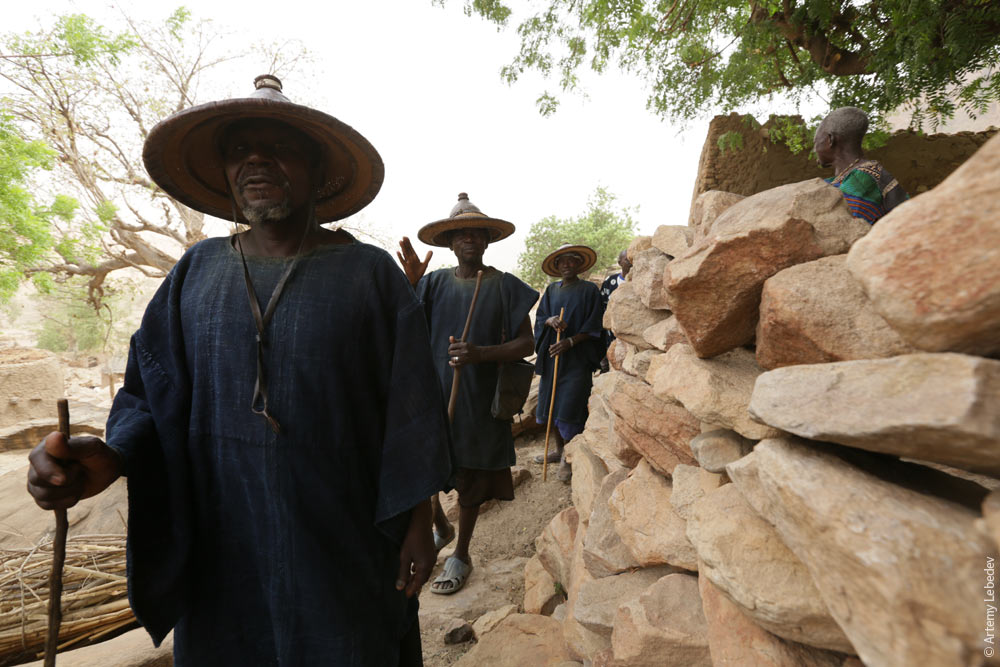 Заиграла музыка. The music starts to play. Начался танец. The dance begins. 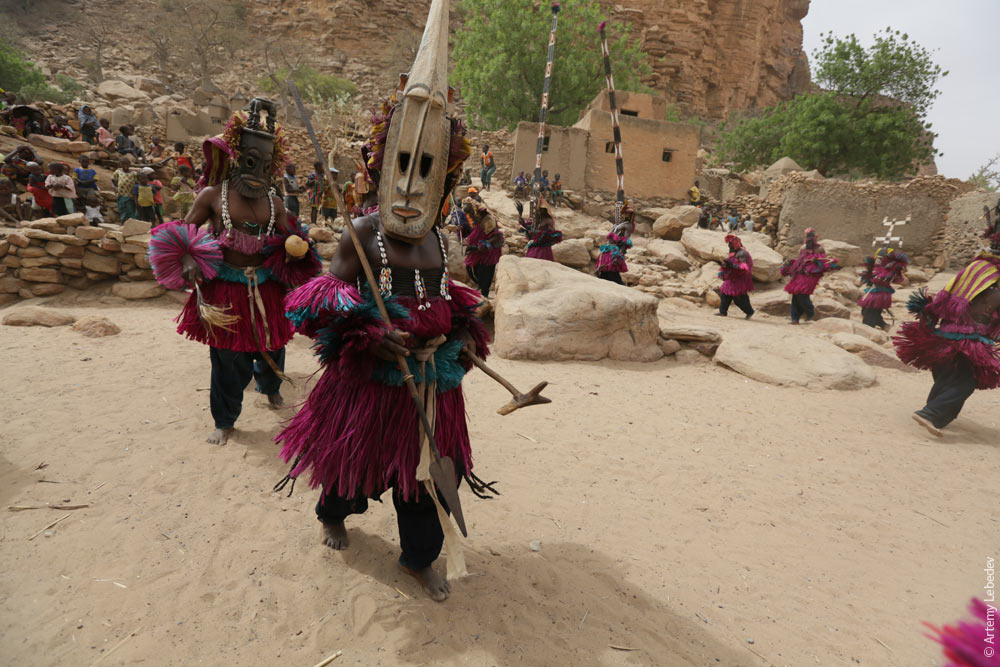 Здесь очень важно, чтобы никто не узнал пляшущего. Маски нельзя снимать. It’s very important for the dancers not to be identified. No one is allowed to take off their mask. 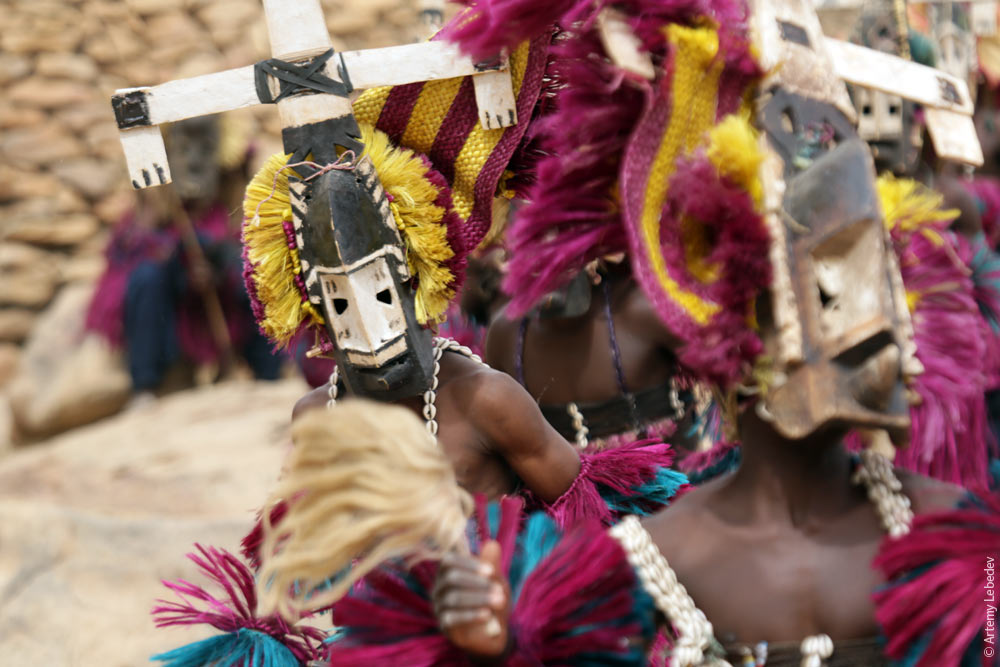 Некоторые маски высотой по три метра. Some of the masks are three meters tall. 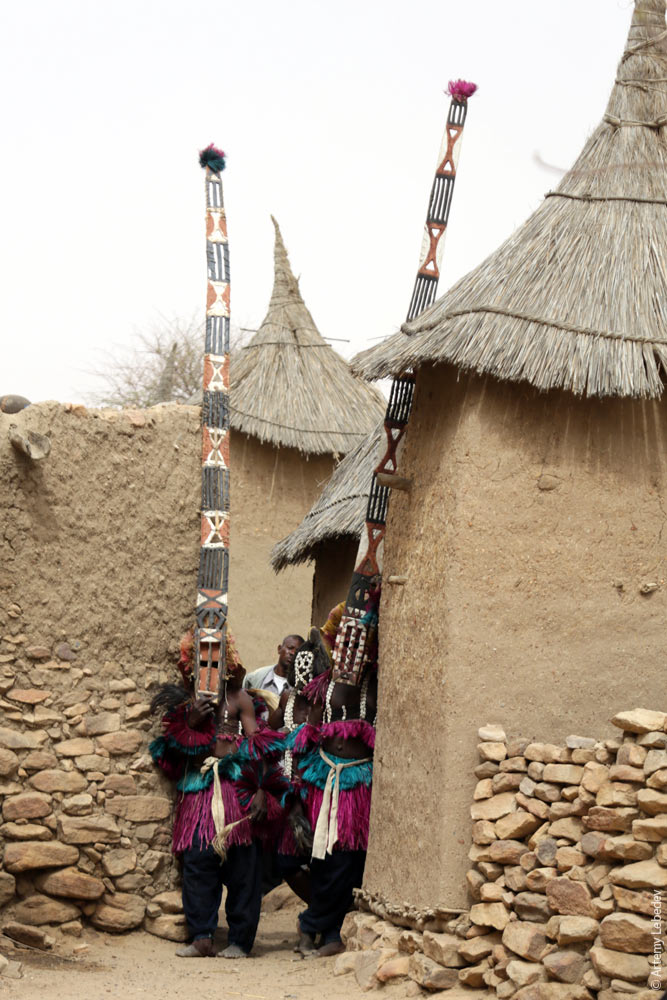 Никто не работал. No one worked. 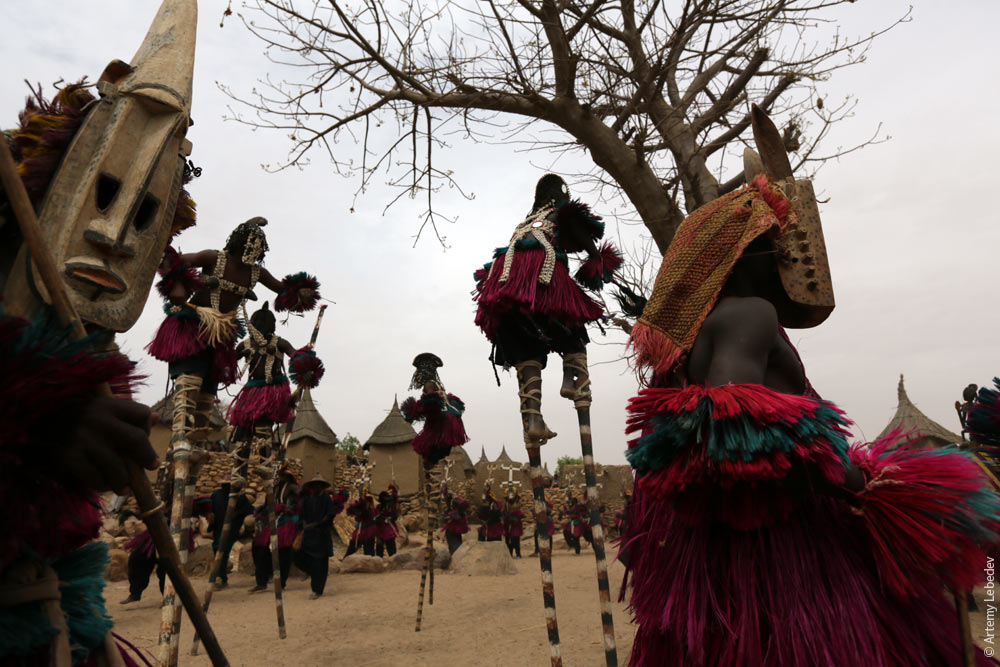 |